Hanyu Li
SAIL-Embedding Technical Report: Omni-modal Embedding Foundation Model
Oct 14, 2025Abstract:Multimodal embedding models aim to yield informative unified representations that empower diverse cross-modal tasks. Despite promising developments in the evolution from CLIP-based dual-tower architectures to large vision-language models, prior works still face unavoidable challenges in real-world applications and business scenarios, such as the limited modality support, unstable training mechanisms, and industrial domain gaps. In this work, we introduce SAIL-Embedding, an omni-modal embedding foundation model that addresses these issues through tailored training strategies and architectural design. In the optimization procedure, we propose a multi-stage training scheme to boost the multifaceted effectiveness of representation learning. Specifically, the content-aware progressive training aims to enhance the model's adaptability to diverse downstream tasks and master enriched cross-modal proficiency. The collaboration-aware recommendation enhancement training further adapts multimodal representations for recommendation scenarios by distilling knowledge from sequence-to-item and ID-to-item embeddings while mining user historical interests. Concurrently, we develop the stochastic specialization and dataset-driven pattern matching to strengthen model training flexibility and generalizability. Experimental results show that SAIL-Embedding achieves SOTA performance compared to other methods in different retrieval tasks. In online experiments across various real-world scenarios integrated with our model, we observe a significant increase in Lifetime (LT), which is a crucial indicator for the recommendation experience. For instance, the model delivers the 7-day LT gain of +0.158% and the 14-day LT gain of +0.144% in the Douyin-Selected scenario. For the Douyin feed rank model, the match features produced by SAIL-Embedding yield a +0.08% AUC gain.
IDA-Bench: Evaluating LLMs on Interactive Guided Data Analysis
May 23, 2025Abstract:Large Language Models (LLMs) show promise as data analysis agents, but existing benchmarks overlook the iterative nature of the field, where experts' decisions evolve with deeper insights of the dataset. To address this, we introduce IDA-Bench, a novel benchmark evaluating LLM agents in multi-round interactive scenarios. Derived from complex Kaggle notebooks, tasks are presented as sequential natural language instructions by an LLM-simulated user. Agent performance is judged by comparing its final numerical output to the human-derived baseline. Initial results show that even state-of-the-art coding agents (like Claude-3.7-thinking) succeed on < 50% of the tasks, highlighting limitations not evident in single-turn tests. This work underscores the need to improve LLMs' multi-round capabilities for building more reliable data analysis agents, highlighting the necessity of achieving a balance between instruction following and reasoning.
V2I-Calib: A Novel Calibration Approach for Collaborative Vehicle and Infrastructure LiDAR Systems
Jul 14, 2024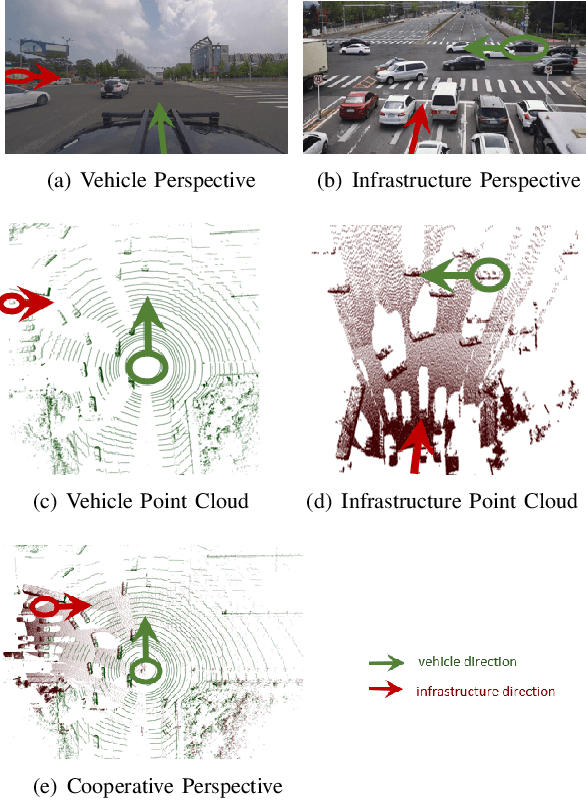
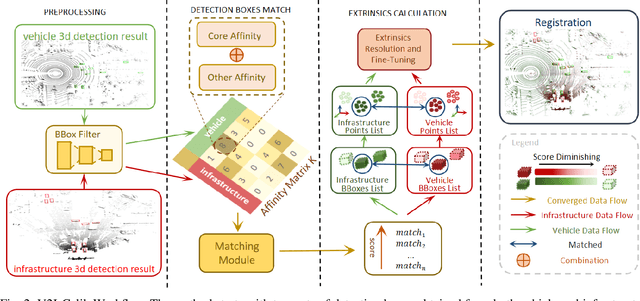
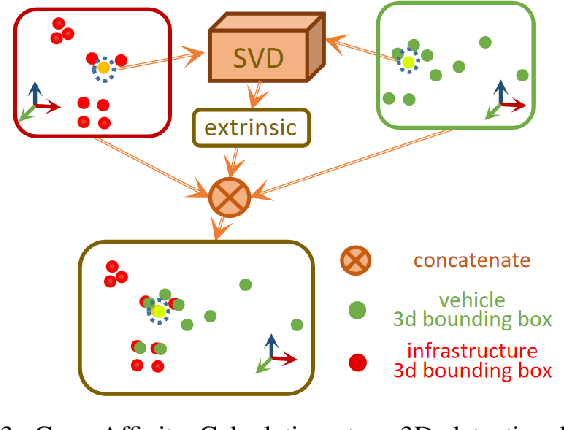
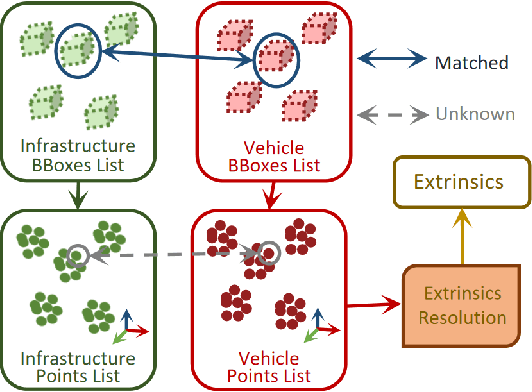
Abstract:Cooperative vehicle and infrastructure LiDAR systems hold great potential, yet their implementation faces numerous challenges. Calibration of LiDAR systems across heterogeneous vehicle and infrastructure endpoints is a critical step to ensure the accuracy and consistency of perception system data, necessitating calibration methods that are real-time and stable. To this end, this paper introduces a novel calibration method for cooperative vehicle and road infrastructure LiDAR systems, which exploits spatial association information between detection boxes. The method centers around a novel Overall IoU metric that reflects the correlation of targets between vehicle and infrastructure, enabling real-time monitoring of calibration results. We search for common matching boxes between vehicle and infrastructure nodes by constructing an affinity matrix. Subsequently, these matching boxes undergo extrinsic parameter computation and optimization. Comparative and ablation experiments on the DAIR-V2X dataset confirm the superiority of our method. To better reflect the differences in calibration results, we have categorized the calibration tasks on the DAIR-V2X dataset based on their level of difficulty, enriching the dataset's utility for future research. Our project is available at https://github.com/MassimoQu/v2i-calib .
ReChorus2.0: A Modular and Task-Flexible Recommendation Library
May 28, 2024
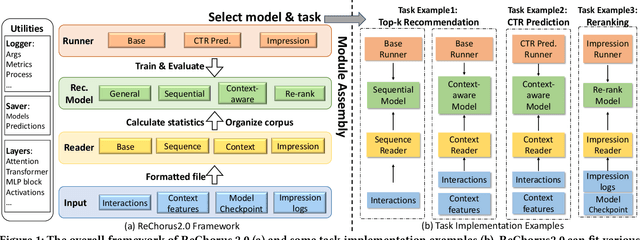
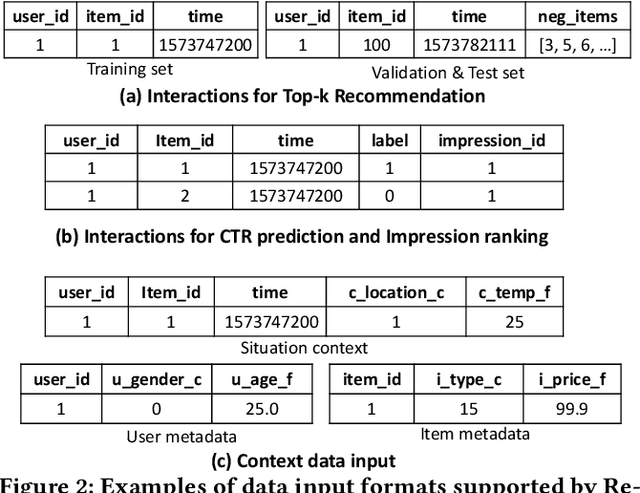

Abstract:With the applications of recommendation systems rapidly expanding, an increasing number of studies have focused on every aspect of recommender systems with different data inputs, models, and task settings. Therefore, a flexible library is needed to help researchers implement the experimental strategies they require. Existing open libraries for recommendation scenarios have enabled reproducing various recommendation methods and provided standard implementations. However, these libraries often impose certain restrictions on data and seldom support the same model to perform different tasks and input formats, limiting users from customized explorations. To fill the gap, we propose ReChorus2.0, a modular and task-flexible library for recommendation researchers. Based on ReChorus, we upgrade the supported input formats, models, and training&evaluation strategies to help realize more recommendation tasks with more data types. The main contributions of ReChorus2.0 include: (1) Realization of complex and practical tasks, including reranking and CTR prediction tasks; (2) Inclusion of various context-aware and rerank recommenders; (3) Extension of existing and new models to support different tasks with the same models; (4) Support of highly-customized input with impression logs, negative items, or click labels, as well as user, item, and situation contexts. To summarize, ReChorus2.0 serves as a comprehensive and flexible library better aligning with the practical problems in the recommendation scenario and catering to more diverse research needs. The implementation and detailed tutorials of ReChorus2.0 can be found at https://github.com/THUwangcy/ReChorus.
Aiming at the Target: Filter Collaborative Information for Cross-Domain Recommendation
Mar 29, 2024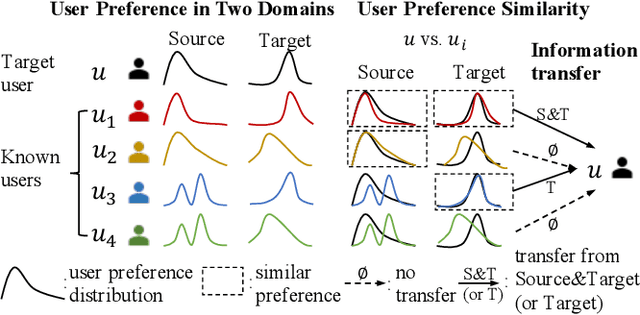
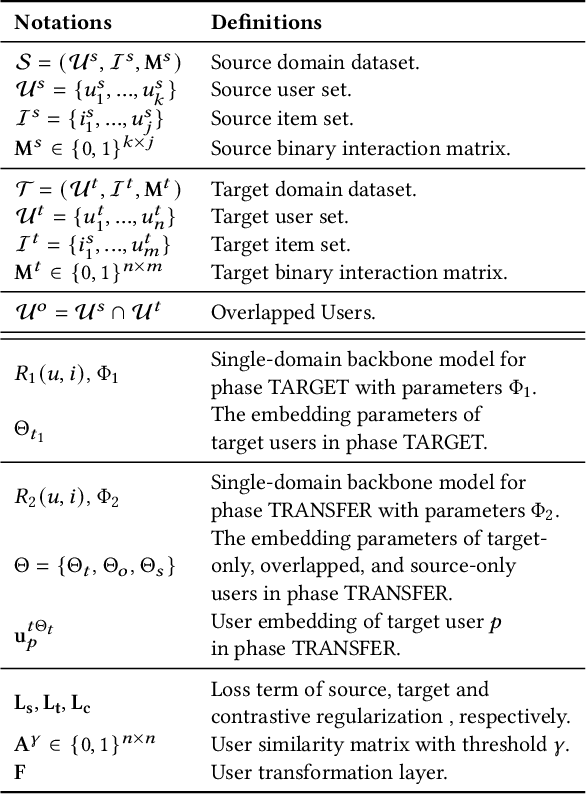
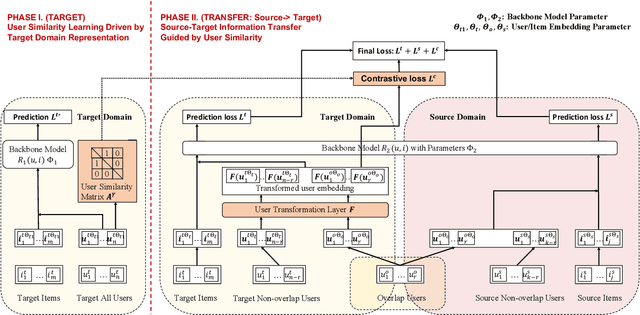

Abstract:Cross-domain recommender (CDR) systems aim to enhance the performance of the target domain by utilizing data from other related domains. However, irrelevant information from the source domain may instead degrade target domain performance, which is known as the negative transfer problem. There have been some attempts to address this problem, mostly by designing adaptive representations for overlapped users. Whereas, representation adaptions solely rely on the expressive capacity of the CDR model, lacking explicit constraint to filter the irrelevant source-domain collaborative information for the target domain. In this paper, we propose a novel Collaborative information regularized User Transformation (CUT) framework to tackle the negative transfer problem by directly filtering users' collaborative information. In CUT, user similarity in the target domain is adopted as a constraint for user transformation learning to filter the user collaborative information from the source domain. CUT first learns user similarity relationships from the target domain. Then, source-target information transfer is guided by the user similarity, where we design a user transformation layer to learn target-domain user representations and a contrastive loss to supervise the user collaborative information transferred. The results show significant performance improvement of CUT compared with SOTA single and cross-domain methods. Further analysis of the target-domain results illustrates that CUT can effectively alleviate the negative transfer problem.
A survey on algorithms for Nash equilibria in finite normal-form games
Dec 18, 2023Abstract:Nash equilibrium is one of the most influential solution concepts in game theory. With the development of computer science and artificial intelligence, there is an increasing demand on Nash equilibrium computation, especially for Internet economics and multi-agent learning. This paper reviews various algorithms computing the Nash equilibrium and its approximation solutions in finite normal-form games from both theoretical and empirical perspectives. For the theoretical part, we classify algorithms in the literature and present basic ideas on algorithm design and analysis. For the empirical part, we present a comprehensive comparison on the algorithms in the literature over different kinds of games. Based on these results, we provide practical suggestions on implementations and uses of these algorithms. Finally, we present a series of open problems from both theoretical and practical considerations.
The Search-and-Mix Paradigm in Approximate Nash Equilibrium Algorithms
Oct 12, 2023Abstract:AI in Math deals with mathematics in a constructive manner so that reasoning becomes automated, less laborious, and less error-prone. For algorithms, the question becomes how to automate analyses for specific problems. For the first time, this work provides an automatic method for approximation analysis on a well-studied problem in theoretical computer science: computing approximate Nash equilibria in two-player games. We observe that such algorithms can be reformulated into a search-and-mix paradigm, which involves a search phase followed by a mixing phase. By doing so, we are able to fully automate the procedure of designing and analyzing the mixing phase. For example, we illustrate how to perform our method with a program to analyze the approximation bounds of all the algorithms in the literature. Same approximation bounds are computed without any hand-written proof. Our automatic method heavily relies on the LP-relaxation structure in approximate Nash equilibria. Since many approximation algorithms and online algorithms adopt the LP relaxation, our approach may be extended to automate the analysis of other algorithms.
DAIR-V2X: A Large-Scale Dataset for Vehicle-Infrastructure Cooperative 3D Object Detection
Apr 12, 2022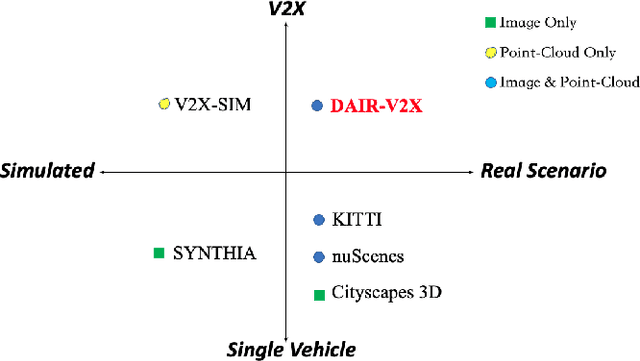
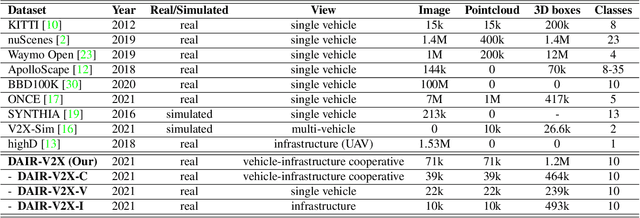

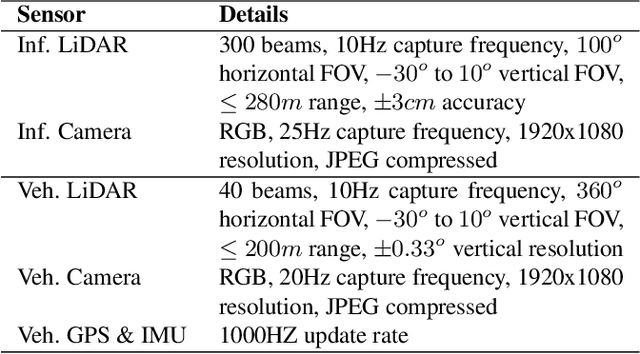
Abstract:Autonomous driving faces great safety challenges for a lack of global perspective and the limitation of long-range perception capabilities. It has been widely agreed that vehicle-infrastructure cooperation is required to achieve Level 5 autonomy. However, there is still NO dataset from real scenarios available for computer vision researchers to work on vehicle-infrastructure cooperation-related problems. To accelerate computer vision research and innovation for Vehicle-Infrastructure Cooperative Autonomous Driving (VICAD), we release DAIR-V2X Dataset, which is the first large-scale, multi-modality, multi-view dataset from real scenarios for VICAD. DAIR-V2X comprises 71254 LiDAR frames and 71254 Camera frames, and all frames are captured from real scenes with 3D annotations. The Vehicle-Infrastructure Cooperative 3D Object Detection problem (VIC3D) is introduced, formulating the problem of collaboratively locating and identifying 3D objects using sensory inputs from both vehicle and infrastructure. In addition to solving traditional 3D object detection problems, the solution of VIC3D needs to consider the temporal asynchrony problem between vehicle and infrastructure sensors and the data transmission cost between them. Furthermore, we propose Time Compensation Late Fusion (TCLF), a late fusion framework for the VIC3D task as a benchmark based on DAIR-V2X. Find data, code, and more up-to-date information at https://thudair.baai.ac.cn/index and https://github.com/AIR-THU/DAIR-V2X.
Characterizing Parametric and Convergence Stability in Nonconvex and Nonsmooth Optimizations: A Geometric Approach
Apr 04, 2022
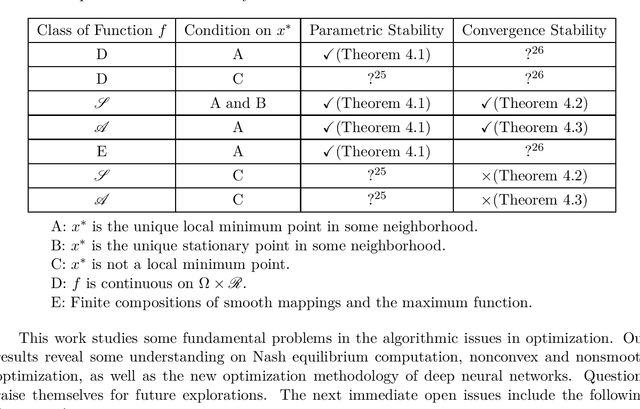
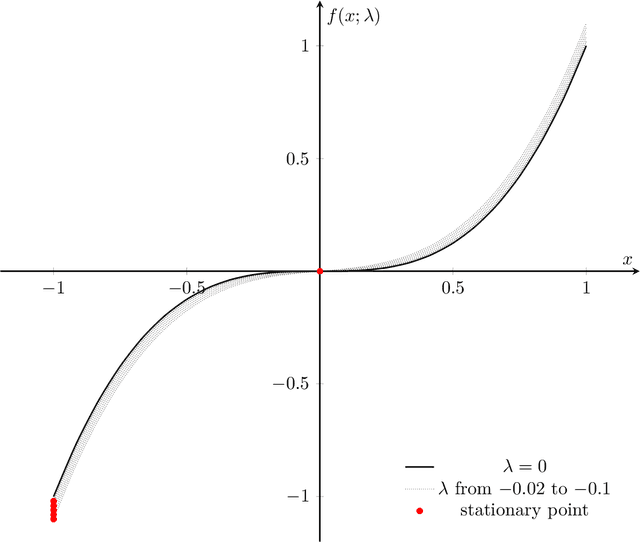
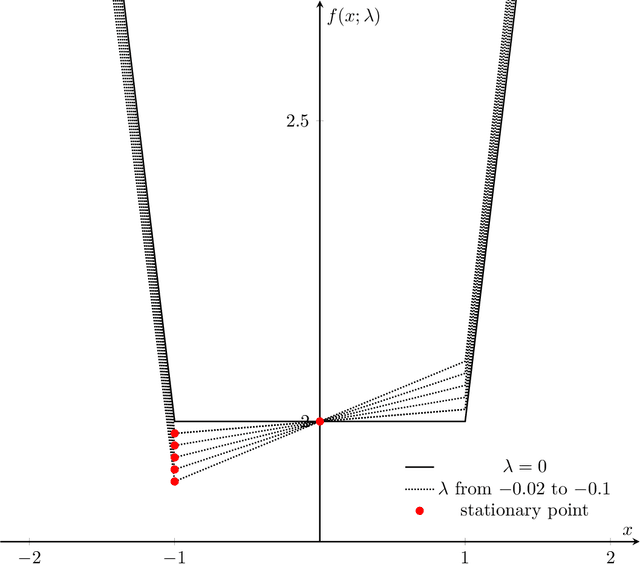
Abstract:We consider stability issues in minimizing a continuous (probably parameterized, nonconvex and nonsmooth) real-valued function $f$. We call a point stationary if all its possible directional derivatives are nonnegative. In this work, we focus on two notions of stability on stationary points of $f$: parametric stability and convergence stability. Parametric considerations are widely studied in various fields, including smoothed analysis, numerical stability, condition numbers and sensitivity analysis for linear programming. Parametric stability asks whether minor perturbations on parameters lead to dramatic changes in the position and $f$ value of a stationary point. Meanwhile, convergence stability indicates a non-escapable solution: Any point sequence iteratively produced by an optimization algorithm cannot escape from a neighborhood of a stationary point but gets close to it in the sense that such stationary points are stable to the precision parameter and algorithmic numerical errors. It turns out that these notions have deep connections to geometry theory. We show that parametric stability is linked to deformations of graphs of functions. On the other hand, convergence stability is concerned with area partitioning of the function domain. Utilizing these connections, we prove quite tight conditions of these two stability notions for a wide range of functions and optimization algorithms with small enough step sizes and precision parameters. These conditions are subtle in the sense that a slightly weaker function requirement goes to the opposite of primitive intuitions and leads to wrong conclusions. We present three applications of this theory. These applications reveal some understanding on Nash equilibrium computation, nonconvex and nonsmooth optimization, as well as the new optimization methodology of deep neural networks.
Rope3D: TheRoadside Perception Dataset for Autonomous Driving and Monocular 3D Object Detection Task
Mar 25, 2022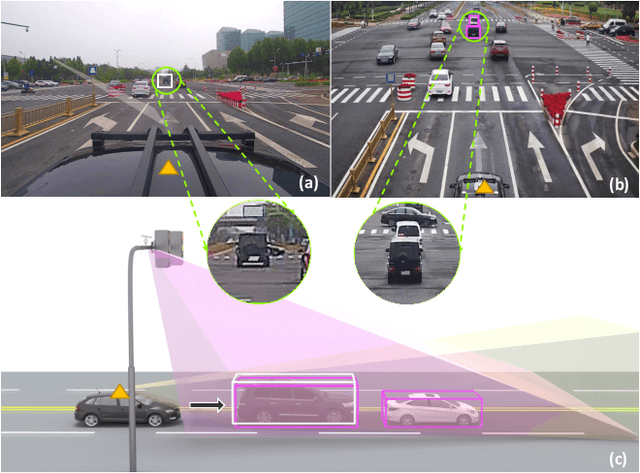
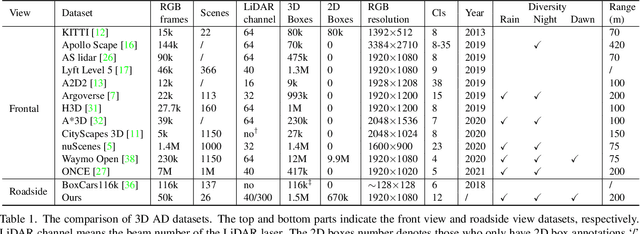


Abstract:Concurrent perception datasets for autonomous driving are mainly limited to frontal view with sensors mounted on the vehicle. None of them is designed for the overlooked roadside perception tasks. On the other hand, the data captured from roadside cameras have strengths over frontal-view data, which is believed to facilitate a safer and more intelligent autonomous driving system. To accelerate the progress of roadside perception, we present the first high-diversity challenging Roadside Perception 3D dataset- Rope3D from a novel view. The dataset consists of 50k images and over 1.5M 3D objects in various scenes, which are captured under different settings including various cameras with ambiguous mounting positions, camera specifications, viewpoints, and different environmental conditions. We conduct strict 2D-3D joint annotation and comprehensive data analysis, as well as set up a new 3D roadside perception benchmark with metrics and evaluation devkit. Furthermore, we tailor the existing frontal-view monocular 3D object detection approaches and propose to leverage the geometry constraint to solve the inherent ambiguities caused by various sensors, viewpoints. Our dataset is available on https://thudair.baai.ac.cn/rope.
 Add to Chrome
Add to Chrome Add to Firefox
Add to Firefox Add to Edge
Add to Edge